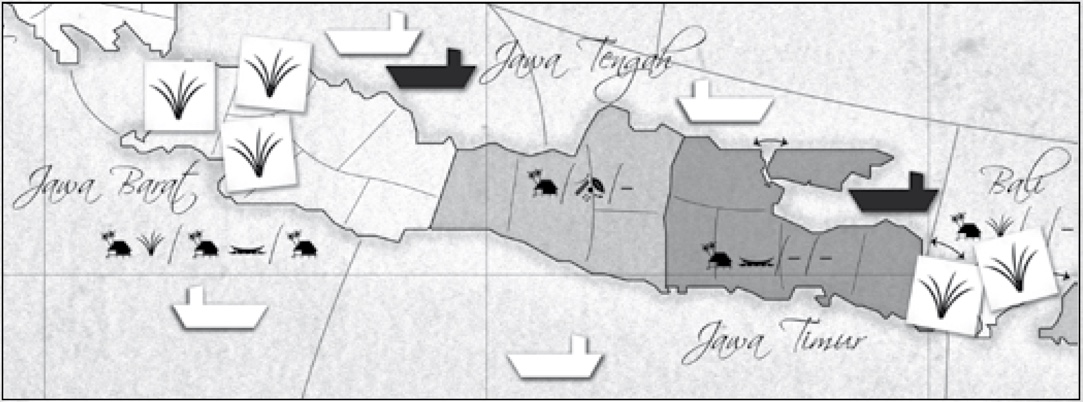E. Mergers
Table of Contents
In this phase, players may announce mergers, and then bid for control of the new companies. Only players who have researched at least one step on the Mergers R&D track may announce mergers—skip this phase in the beginning of the game, when no player has conducted this research yet. However, every player with a free slot and both of the owners of the companies that are being merged may always join in the bidding, even if they have performed no Mergers R&D.
Players may announce only one merger per round. The Mergers phase continues until no player wants to announce more mergers, so players can announce as many mergers as they want.
E1. Announcing mergers
In turn order, each player who has researched at least one “Merger” step may announce a merger. Each merger is resolved before the next is announced.

Merger R&D does NOT influence who may bid. Players may either pass or bid. Once they pass, they cannot rejoin bidding for this merger. Bids must be raised in increments equal to multiples of the number of goods the companies have on the board—e.g., when merging rice companies with 3 and 5 goods on the board, the minimum bid of 8x20=160 can be raised in multiples of 8 to 168, 176, 184, etc.
E2. Resolving the merger
When all players have passed, the resulting company is given to the player who has made the highest bid. This player divides the total sum amongst the former owners according to the number of goods/ships the original companies had on the board—so if 224 was the winning bid on the 3 and 5 company above, it would be divided 84/140. Note that the acquiring player must be able to pay the total sum bid, even if he owns one or more of the original companies.
The company deeds of the original company are placed together and given to the new owner. In case of a merger between shipping companies, the type of ships is adjusted on the board so that it is easy to recognize that they now belong to one company (see suggestions on ship types). In case of a merger between production companies, no adjustments on the map are needed.
After the merger has been completed, the merger phase continues with the next player. Play continues in order of play until no player wants to announce another merger. Note that for announcing mergers, it is allowed to pass and then rejoin, as mergers announced by other players often enable a player to free up slots and announce mergers himself, resulting in a furious wave of merger activity.
E3. Suggestions on ship types
As shipping companies grow large, it is often best to use both types of ships from a single color. In some cases, one color may not be enough. If this occurs, use two colors for the big company, and the other color for the other companies.
Note that no ships are ever taken off the board - even if the resulting company has multiple ships in the same area, these just remain.
One ship of each company should be positioned on the Company hull track (below the R&D track), so everyone can see at a glance what the hull capacity of that particular company is.
E4. Siap faji mergers
Siap faji mergers take place between a rice and a spice company. The resulting company produces microwave meals, called “siap faji”. This is the only instance where two companies producing different goods can be merged.
Siap faji mergers are resolved in the same way as normal mergers, with the following exceptions:
- A siap faji company cannot be formed in era a - only in era b or c.
- The nominal value bid is equal to the total number of goods (rice+spice) x 25.
- The total bid is divided amongst the owners of the original companies in the same way as with a normal merger - so if one player owned 4 rice and the other 3 spices, the first would get 4/7, the second 3/7 of the total price.
- After the merger is completed, the new owner must give up half of the goods (land areas) owned by the old companies (rounded up). Empty these areas of any goods. You can only give up areas at the border of your company’s estate—that is, you may not break contiguous zones of spice/rice by taking goods from the middle. Replace the rice/spice goods in the remaining areas with siap faji goods. So in the example above, the resulting company would consist of 3 siap faji goods.
- If you have sufficient research, it is allowed to merge a “3”-size spice company with a 1-size rice company. The number of deeds or goods in the merging companies need not be balanced in any way.
- Once a siap faji company has been formed, it can only merge with another siap faji company. Mergers between a siap faji company and a rice or spice company are not possible.